Fourth of July – Happy Independence Day, America!
United States Corporation Dissolved – Welcome to the New Constitutional Republic of America! READ How Congress Treasonous Act Unlawfully Allowed Washington, D.C. to operate a now-defunct USA, Inc.
July 4, 2025
The Fourth of July—also known as Independence Day or July 4th—has been a federal holiday in the United States since 1941, but the tradition of Independence Day celebrations goes back to the 18th century and the American Revolution.
Revolutionary War
The American Revolutionary War was an insurrection by Patriots in the 13 colonies against British rule, resulting in American independence.
On July 2nd, 1776, the Continental Congress voted in favor of independence, and two days later delegates from the 13 colonies adopted the Declaration of Independence, a historic document drafted by Thomas Jefferson.
Thomas Jefferson
Thomas Jefferson (1743-1826), author of the Declaration of Independence and the third U.S. president, was a leading figure in America’s early development.
During the American Revolutionary War (1775-83), Jefferson served in the Virginia legislature and the Continental Congress and was governor of Virginia.
He later served as U.S. minister to France and U.S. secretary of state and was vice president under John Adams (1735-1826).
Jefferson, a Democratic-Republican who thought the national government should have a limited role in citizens’ lives, was elected president in 1800.
During his two terms in office (1801-1809), the U.S. purchased the Louisiana Territory and Lewis and Clark explored the vast new acquisition.
The Louisiana Purchase of 1803 brought into the United States about 828,000 square miles of territory from France, thereby doubling the size of the young republic.
What was known at the time as the Louisiana Territory stretched from the Mississippi River in the east to the Rocky Mountains in the west and from the Gulf of Mexico in the south to the Canadian border in the north.
Part or all of 15 states were eventually created from the land deal, which is considered one of the most important achievements of Thomas Jefferson’s presidency.
Although Jefferson promoted individual liberty, he also enslaved over six hundred people throughout his life. After leaving office, he retired to his Virginia plantation, Monticello, and helped found the University of Virginia.
The Continental Congress served as the government of the 13 American colonies, and later the United States, from 1774 to 1789.
The First Continental Congress, comprised of delegates from the colonies, met in 1774 in reaction to the Intolerable Acts, a series of measures imposed by the British government after the colonies resisted new taxes.
In 1775, the Second Continental Congress convened after the Revolutionary War had already begun. In 1776, it took the momentous step of declaring America’s independence from Britain.
Five years later, the Congress ratified the first national constitution, the Articles of Confederation, under which the country would be governed until 1789, when it was replaced by the U.S. Constitution.
The 13 Colonies
The 13 colonies founded along the Eastern seaboard in the 17th and 18th centuries weren't the first colonial outposts on the American continent, but they are the ones where colonists eventually pushed back against British rule and designed their own version of government to form the United States.
These 13 original colonies (New Hampshire, Massachusetts, Connecticut, Rhode Island, New York, New Jersey, Pennsylvania, Delaware, Maryland, Virginia, North Carolina, South Carolina and Georgia) were established by British colonists for a range of reasons, from the pursuit of fortunes, to escape from religious prosecution to the desire to create new forms of government.
From 1776 to the present day, July 4th has been celebrated as the birth of American independence, with festivities ranging from fireworks, parades and concerts to more casual family gatherings and barbecues.
Why Do We Celebrate July 4 with Fireworks?
The Independence Day tradition dates nearly as far back as the country's beginning and was proposed by one of the Founding Fathers.
The Fourth of July 2024 is on Thursday, July 4.
History of Independence Day
When the initial battles in the Revolutionary War broke out in April 1775, few colonists desired complete independence from Great Britain, and those who did were considered radical.
By the middle of the following year, however, many more colonists had come to favor independence, thanks to growing hostility against Britain and the spread of revolutionary sentiments such as those expressed in the bestselling pamphlet “Common Sense,” published by Thomas Paine in early 1776.
Thomas Paine
Thomas Paine was an England-born political philosopher and writer who supported revolutionary causes in America and Europe.
Published in 1776 to international acclaim, “Common Sense” was the first pamphlet to advocate American independence.
After writing the “The American Crisis” papers during the Revolutionary War, Paine returned to Europe and offered a stirring defense of the French Revolution with “Rights of Man.”
His political views led to a stint in prison; after his release, he produced his last great essay, “The Age of Reason,” a controversial critique of institutionalized religion and Christian theology.
How Thomas Paine’s ‘Common Sense’ Helped Inspire the American Revolution
The 47-page pamphlet took colonial America by storm in 1776 and made critical arguments for declaring independence from England.
“Common Sense” is credited as playing a crucial role in convincing colonists to take up arms against England.
In it, Paine argues that representational government is superior to a monarchy or other forms of government based on aristocracy and heredity.
Paine also claimed that the American colonies needed to break with England in order to survive and that there would never be a better moment in history for that to happen.
He argued that America was related to Europe as a whole, not just England, and that it needed to freely trade with nations like France and Spain.
The pamphlet proved so influential that John Adams reportedly declared, “Without the pen of the author of ‘Common Sense,’ the sword of Washington would have been raised in vain.”
John Adams
John Adams (1735-1826) was a leader of the American Revolution and served as the second U.S. president from 1797 to 1801.
The Massachusetts-born, Harvard-educated Adams began his career as a lawyer. Intelligent, patriotic, opinionated and blunt, Adams became a critic of Great Britain’s authority in colonial America and viewed the British imposition of high taxes and tariffs as a tool of oppression.
During the 1770s, he was a delegate to the Continental Congress. In the 1780s, Adams served as a diplomat in Europe and helped negotiate the Treaty of Paris (1783), which officially ended the American Revolutionary War (1775-83).
The Revolutionary War waged by the American colonies against Britain influenced political ideas and revolutions around the globe, as a small fledgling nation won its freedom from the greatest military force of its time.
From 1789 to 1797, Adams was America’s first vice president. He then served a term as the nation’s second president. He was defeated for another term by Thomas Jefferson (1743-1826). His letters to his wife, Abigail Adams, left behind a vivid portrait of his time among the Founding Fathers.
The Founding Fathers
These military leaders, rebels, politicians and writers varied in personality, status and background, but all played a part in forming a new nation and hammering out the framework for the young democracy.
Without them, there would be no United States of America:
The Founding Fathers, a group of predominantly wealthy plantation owners and businessmen, united 13 disparate colonies, fought for independence from Britain and penned a series of influential governing documents that steer the country to this day.
All the Founding Fathers, including the first four U.S. presidents, at one point considered themselves British subjects.
But they revolted against the restrictive rule of King George III—outlining their grievances in the Declaration of Independence, a powerful (albeit incomplete) call for freedom and equality—and won a stunning military victory over what was then the world’s preeminent superpower.
Declaration of Independence
The Declaration of Independence was the first formal statement by a nation’s people asserting their right to choose their own government.
When armed conflict between bands of American colonists and British soldiers began in April 1775, the Americans were ostensibly fighting only for their rights as subjects of the British crown.
By the following summer, with the Revolutionary War in full swing, the movement for independence from Britain had grown, and delegates of the Continental Congress were faced with a vote on the issue.
In mid-June 1776, a five-man committee including Thomas Jefferson, John Adams and Benjamin Franklin was tasked with drafting a formal statement of the colonies’ intentions.
The Congress formally adopted the Declaration of Independence—written largely by Jefferson—in Philadelphia on July 4, a date now celebrated as the birth of American independence.
The Founders proved equally adept later on in peacetime. When the federal government tottered under the Articles of Confederation, prominent citizens met again to hammer out the U.S. Constitution, overcoming major areas of disagreement between large and small states and Southern and Northern ones to form a stable political system.
Showing foresight, they included a Bill of Rights, which enshrined many civil liberties into law and provided a blueprint for other emerging democracies.
There’s no official consensus on who should be considered a Founding Father, and some historians object to the term altogether.
On the whole, though, it’s applied to those leaders who initiated the Revolutionary War and framed the Constitution.
Here are eight of the most influential characters in America’s origin story.
On June 7, when the Continental Congress met at the Pennsylvania State House (later Independence Hall) in Philadelphia, the Virginia delegate Richard Henry Lee introduced a motion calling for the colonies’ independence.
Amid heated debate, Congress postponed the vote on Lee’s resolution, but appointed a five-man committee—including Thomas Jefferson of Virginia, John Adams of Massachusetts, Roger Sherman of Connecticut, Benjamin Franklin of Pennsylvania and Robert R. Livingston of New York—to draft a formal statement justifying the break with Great Britain.
The Declaration of Independence Was Also a List of Grievances
The document was designed to prove to the world (especially France) that the colonists were right to defy King George III's rule.
On July 2nd, the Continental Congress voted in favor of Lee’s resolution for independence in a near-unanimous vote (the New York delegation abstained, but later voted affirmatively).
On that day, John Adams wrote to his wife Abigail that July 2 “will be celebrated, by succeeding Generations, as the great anniversary Festival” and that the celebration should include “Pomp and Parade…Games, Sports, Guns, Bells, Bonfires and Illuminations from one End of this Continent to the other.”
On July 4th, the Continental Congress formally adopted the Declaration of Independence, which had been written largely by Jefferson.
Though the vote for actual independence took place on July 2nd, from then on the 4th became the day that was celebrated as the birth of American independence.
Early Fourth of July Celebrations and Traditions
In the pre-Revolutionary years, colonists had held annual celebrations of the king’s birthday, which traditionally included the ringing of bells, bonfires, processions, and speechmaking.
By contrast, during the summer of 1776 some colonists celebrated the birth of independence by holding mock funerals for King George III as a way of symbolizing the end of the monarchy’s hold on America and the triumph of liberty.
George III
Festivities including concerts, bonfires, parades and the firing of cannons and muskets usually accompanied the first public readings of the Declaration of Independence, beginning immediately after its adoption.
Philadelphia held the first annual commemoration of independence on July 4, 1777, while Congress was still occupied with the ongoing war.
George Washington
George Washington issued double rations of rum to all his soldiers to mark the anniversary of independence in 1778, and in 1781, several months before the key American victory at the Battle of Yorktown, Massachusetts became the first state to make July 4th an official state holiday.
Battle of Yorktown
After the Revolutionary War, Americans continued to commemorate Independence Day every year, in celebrations that allowed the new nation’s emerging political leaders to address citizens and create a feeling of unity.
By the last decade of the 18th century, the two major political parties—the Federalist Party and Democratic-Republicans—that had arisen began holding separate Fourth of July celebrations in many large cities.
Federalist Party
PRESIDENT GEORGE WASHINGTON IN CONSULTATION WITH MEMBERS OF HIS FIRST CABINET: SECRETARY OF STATE THOMAS JEFFERSON AND SECRETARY OF THE TREASURY ALEXANDER HAMILTON. (THREE LIONS/GETTY IMAGES)
Fourth of July Fireworks
The first fireworks were used as early as 200 BC. The tradition of setting off fireworks on the 4 of July began in Philadelphia on July 4, 1777, during the first organized celebration of Independence Day.
Ship’s cannon fired a 13-gun salute in honor of the 13 colonies.
The Pennsylvania Evening Post reported: “at night there was a grand exhibition of fireworks (which began and concluded with thirteen rockets) on the Commons, and the city was beautifully illuminated.”
That same night, the Sons of Liberty set off fireworks over Boston Common.
Who Were the Sons of Liberty?
Most famous for their role in the Boston Tea Party, the Sons of Liberty used grassroots activism to push back against British rule.
Fourth of July Becomes a Federal Holiday
The tradition of patriotic celebration became even more widespread after the War of 1812, in which the United States again faced Great Britain.
In 1870, the U.S. Congress made July 4th a federal holiday; in 1941, the provision was expanded to grant a paid holiday to all federal employees.
Over the years, the political importance of the holiday would decline, but Independence Day remained an important national holiday and a symbol of patriotism.
Falling in mid-summer, the Fourth of July has since the late 19th century become a major focus of leisure activities and a common occasion for family get-togethers, often involving fireworks and outdoor barbecues.
The most common symbol of the holiday is the American flag, and a common musical accompaniment is “The Star-Spangled Banner,” the national anthem of the United States.
The Star-Spangled Banner
Source: HISTORY.COM EDITORS
"It cannot be emphasized too strongly or too often that this great nation was founded, not by religionists, but by Christians; not on religions, but on the gospel of Jesus Christ. For this very reason peoples of other faiths have been afforded asylum, prosperity, and freedom of worship here." - Patrick Henry
READ MORE:
United States Corporation Dissolved – Welcome to the New Constitutional Republic of America
How Congress Treasonous Act Unlawfully Allowed Washington, D.C. to operate a now defunct Incorporated United States of America
WISHING YOU A BLESSED INDEPENDENCE DAY, July 4th
God may bless America, but Only Americans can preserve it.
Now the Lord is the Spirit, and where the Spirit of the Lord is there is FREEDOM. (I John 3:16)
Share or comment on this article.
Your support is crucial in exposing fake news and in helping us defeat mass censorship.





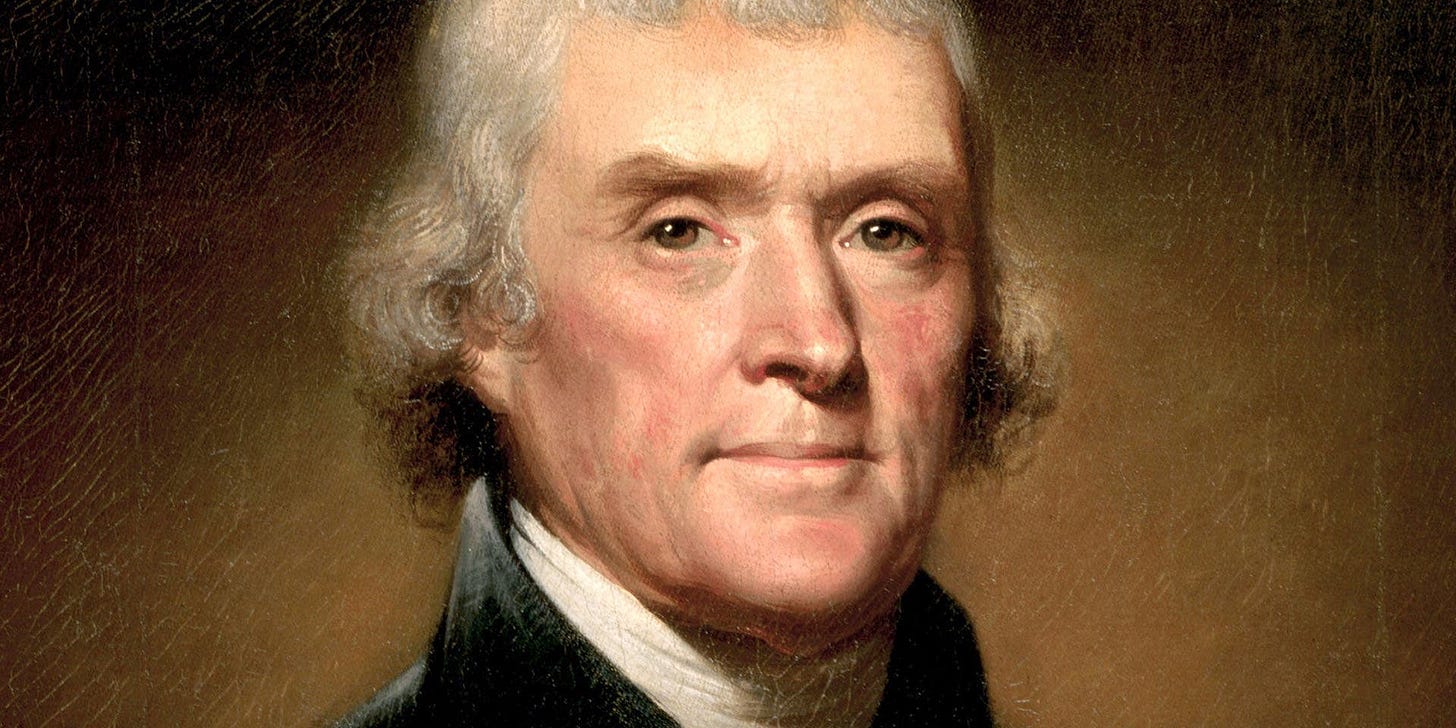
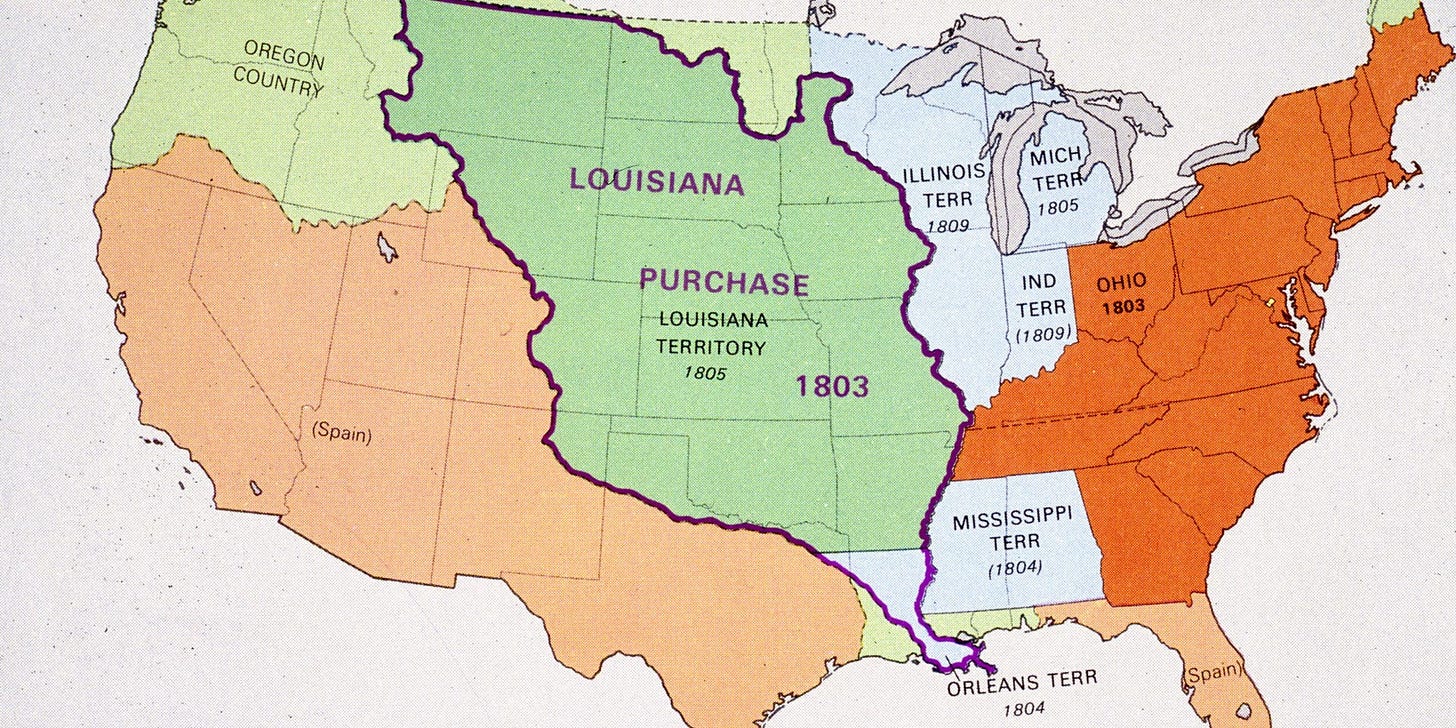





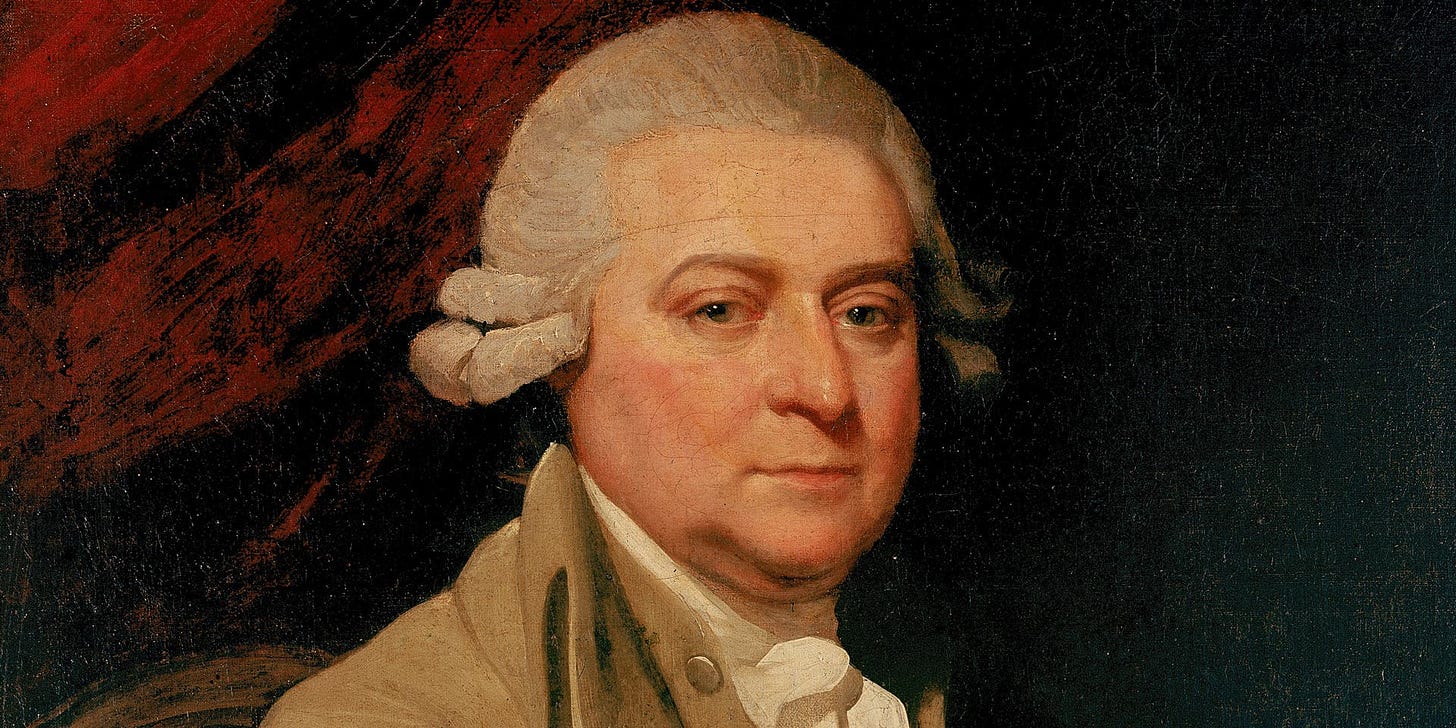


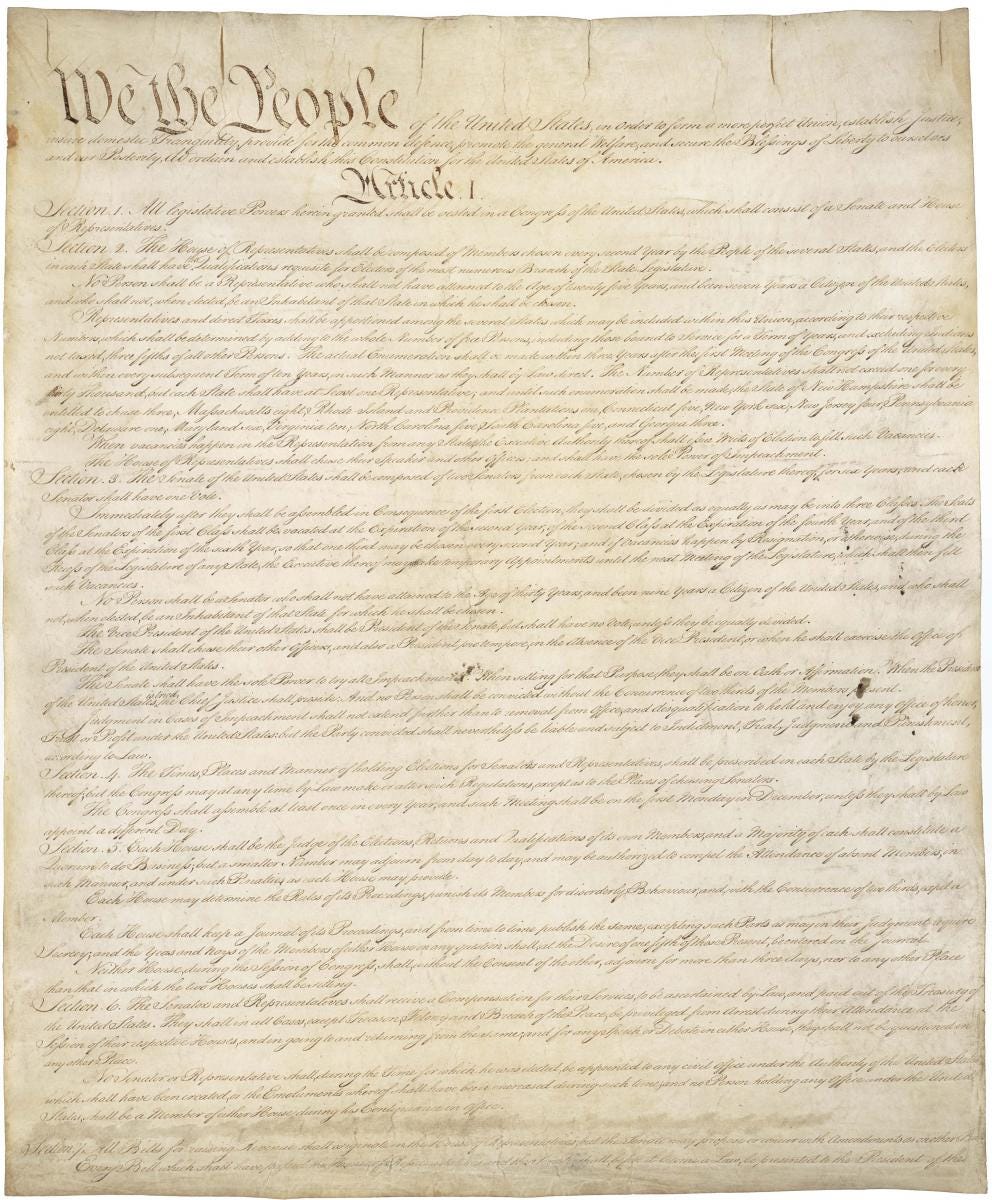
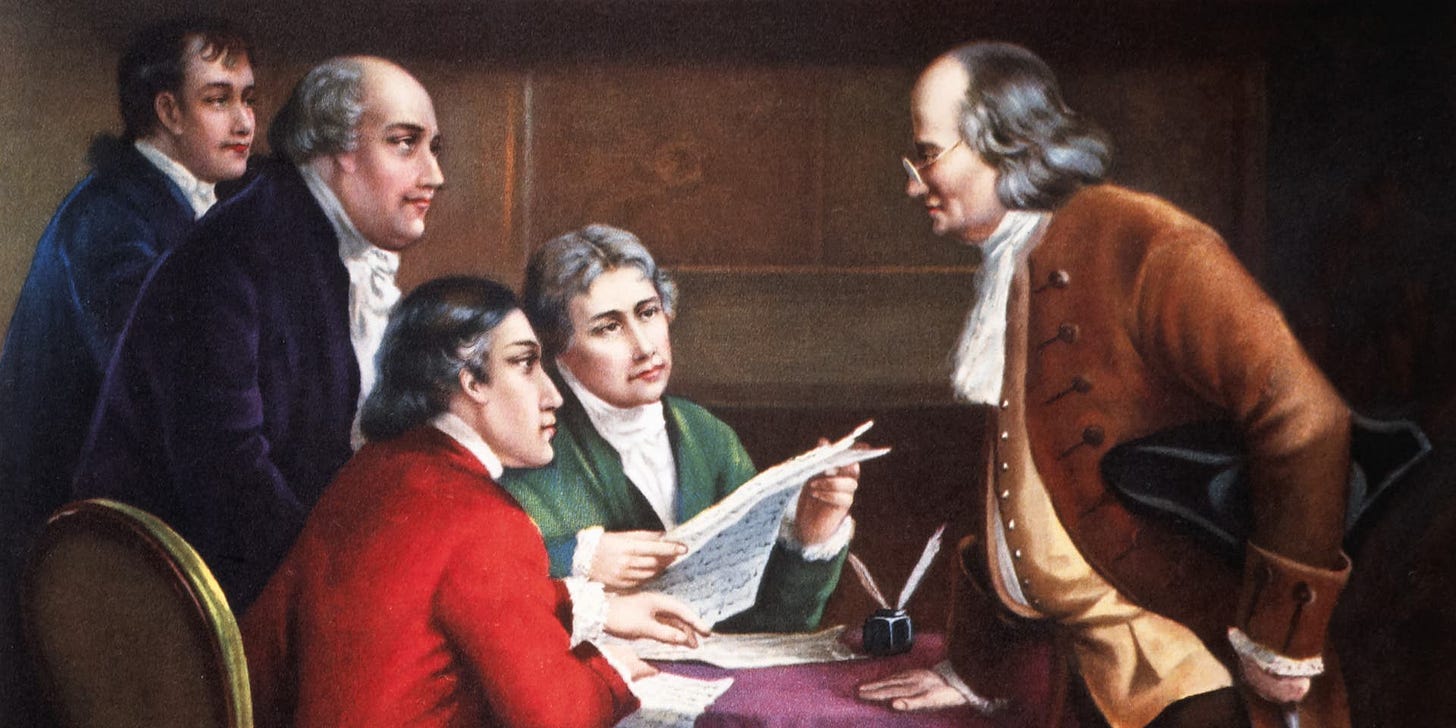

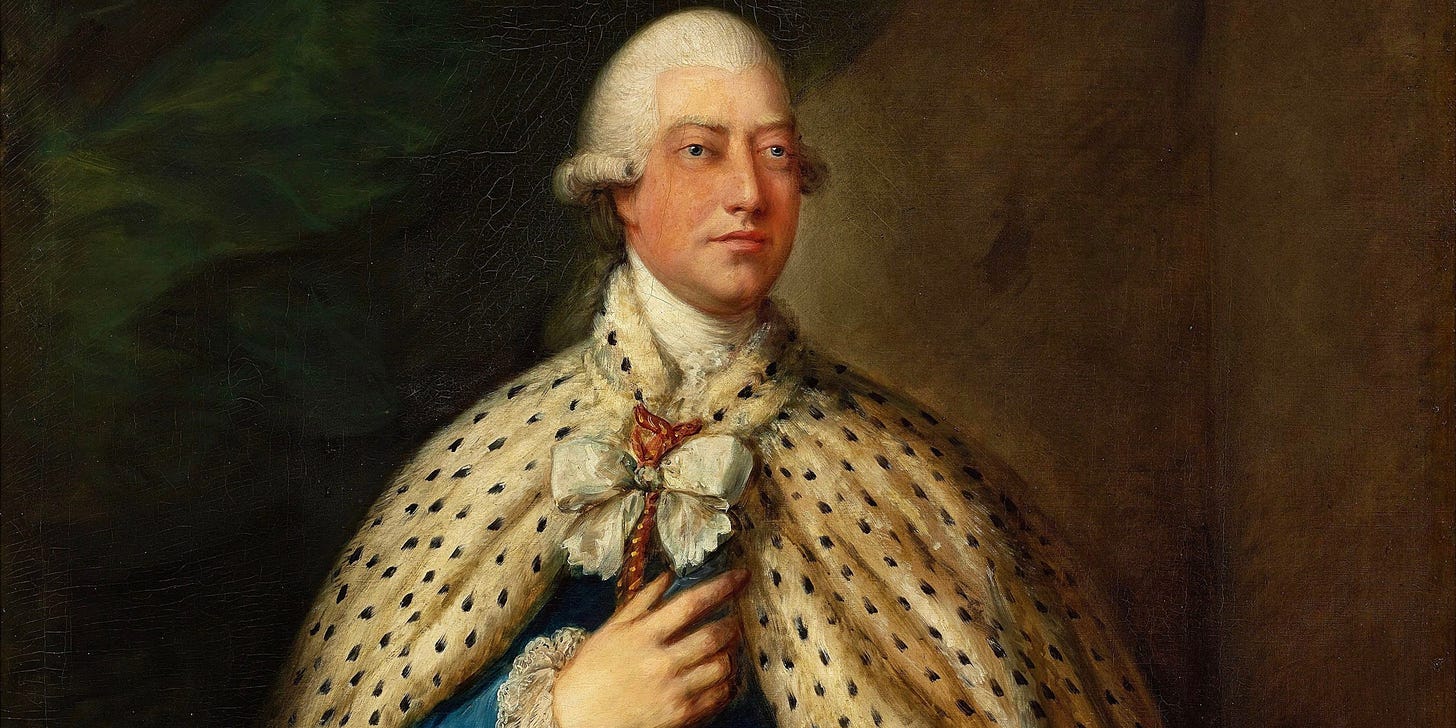
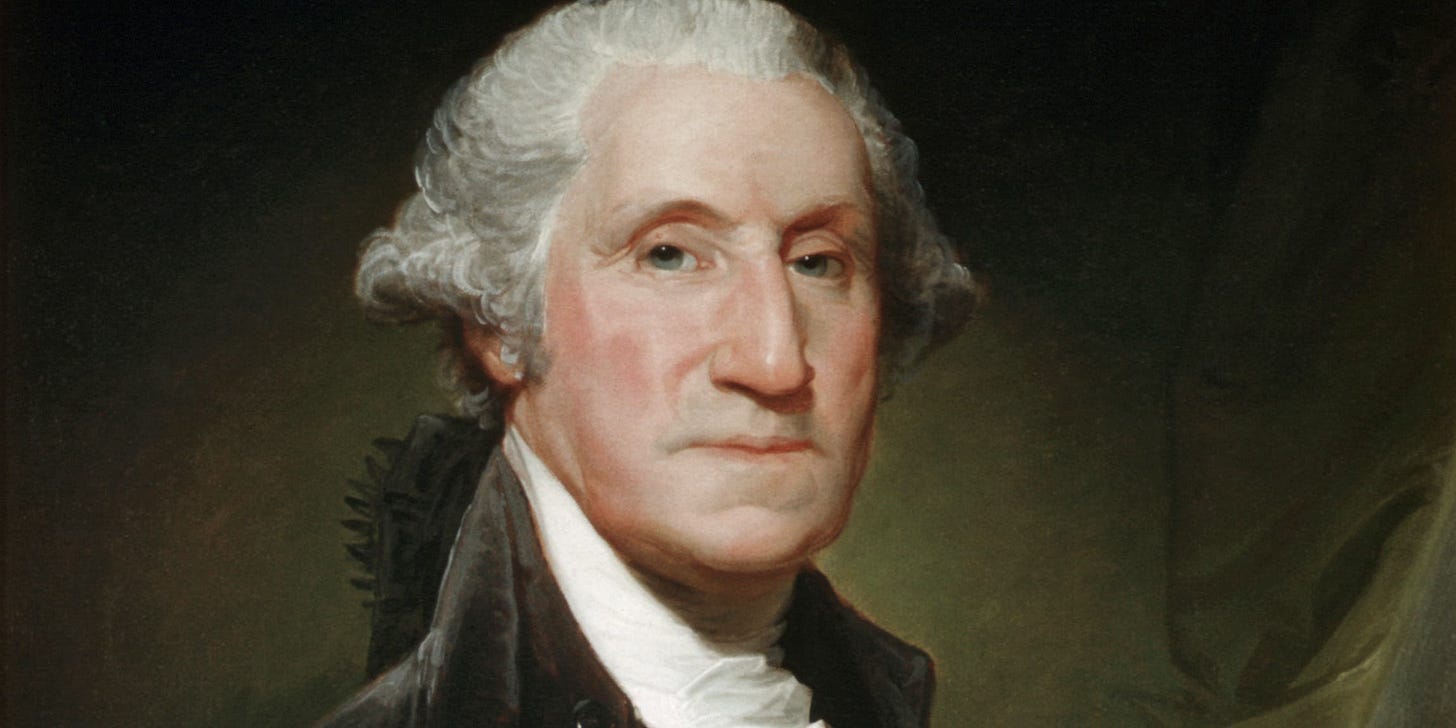
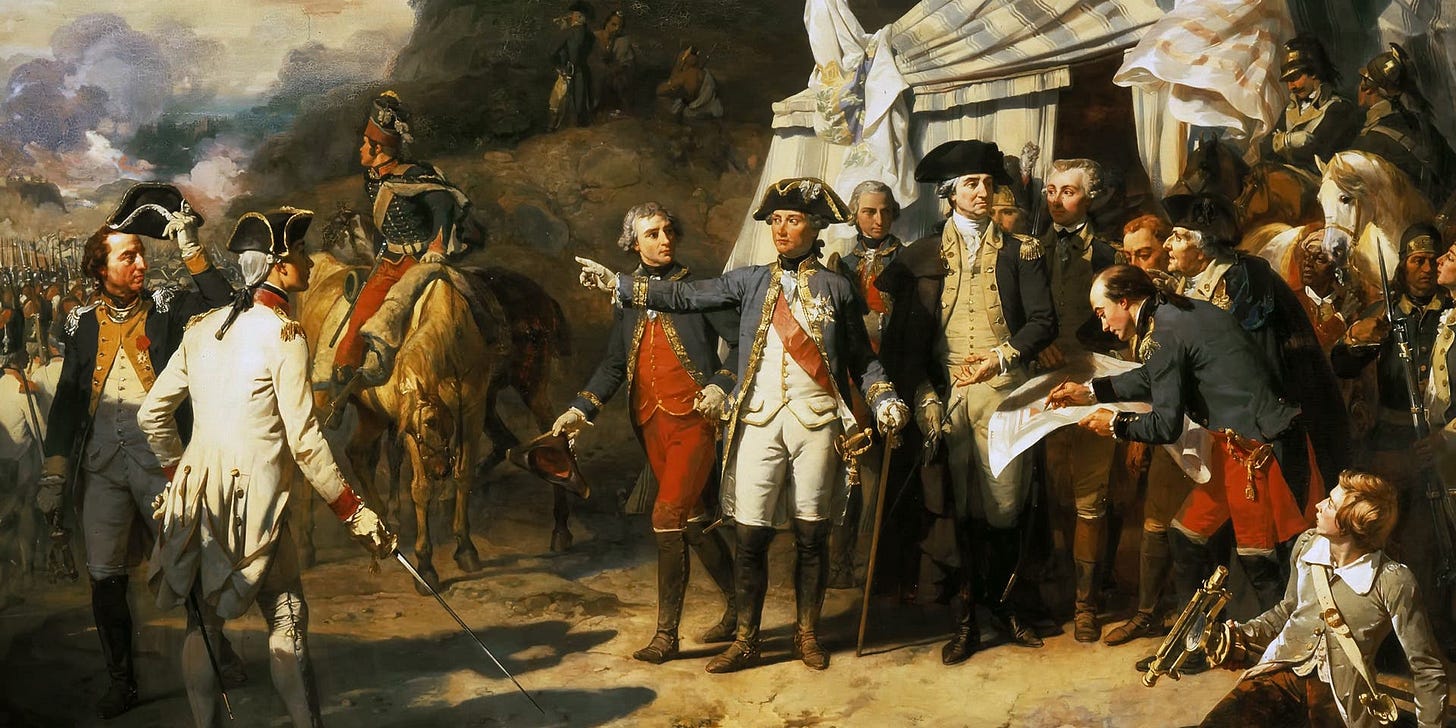


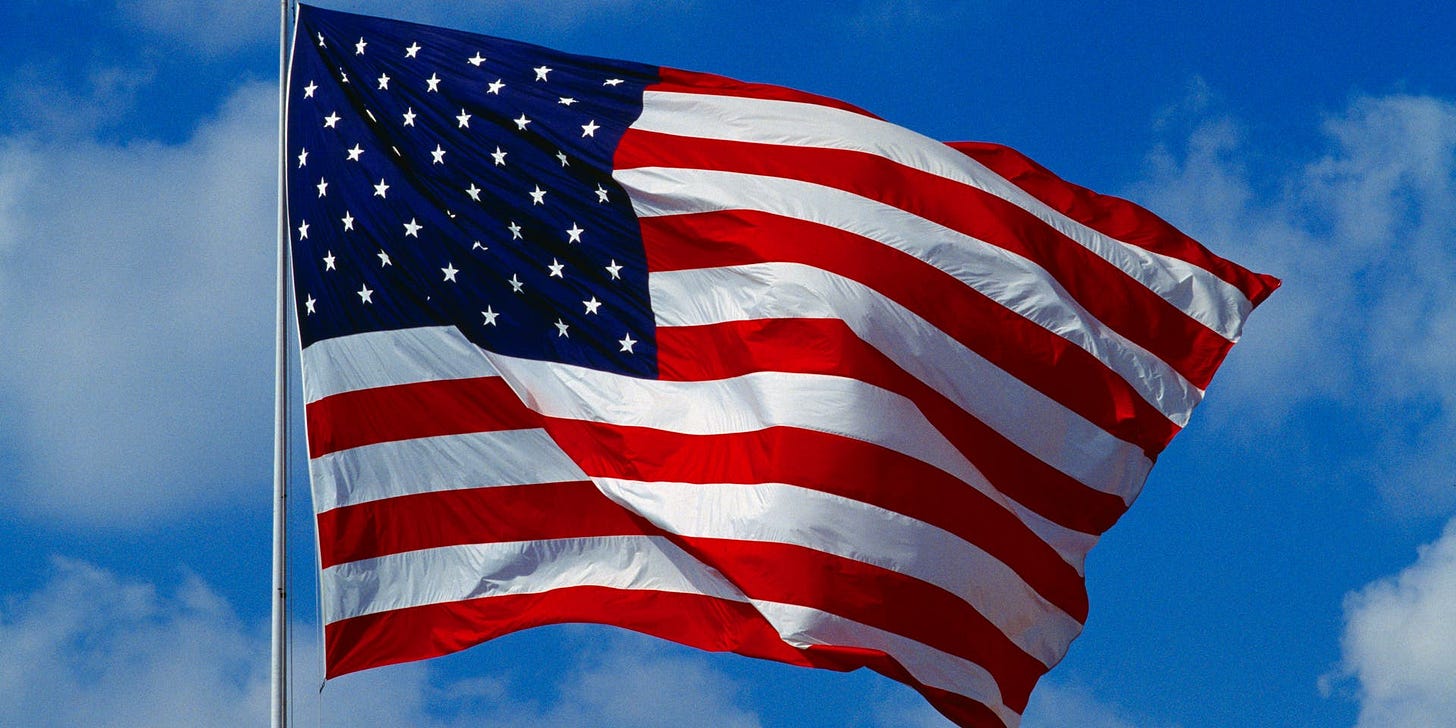

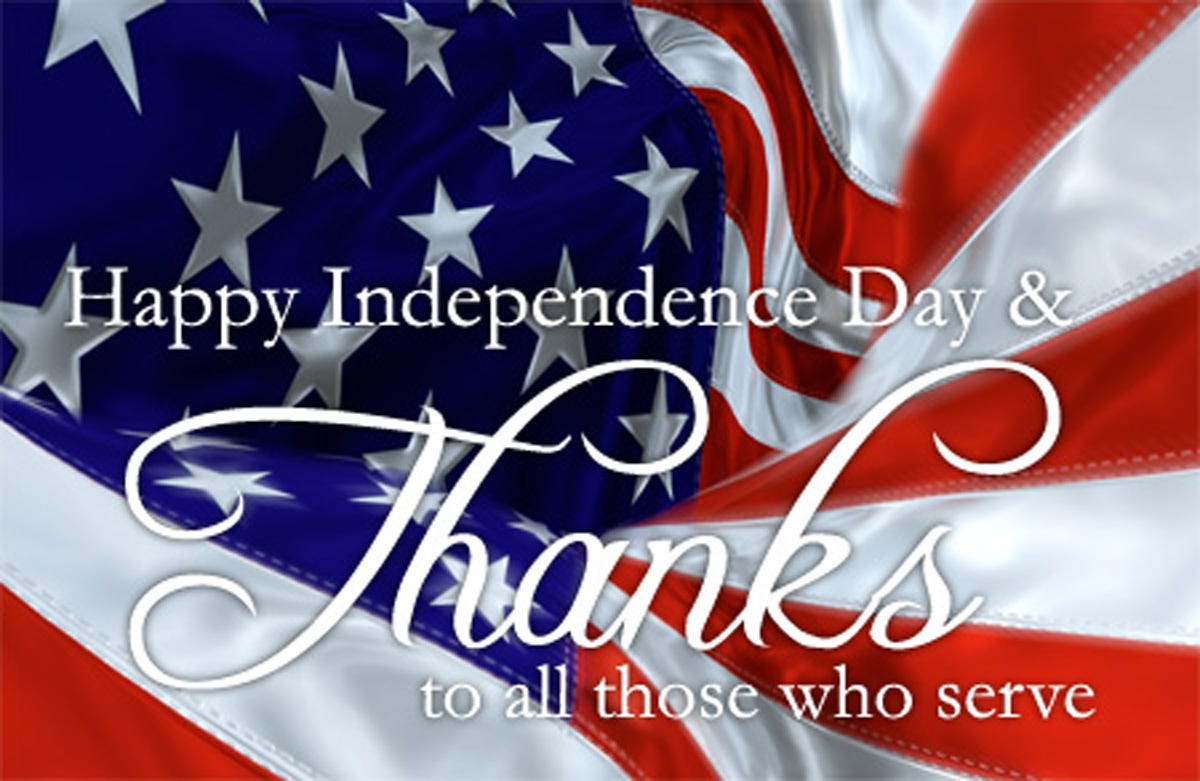


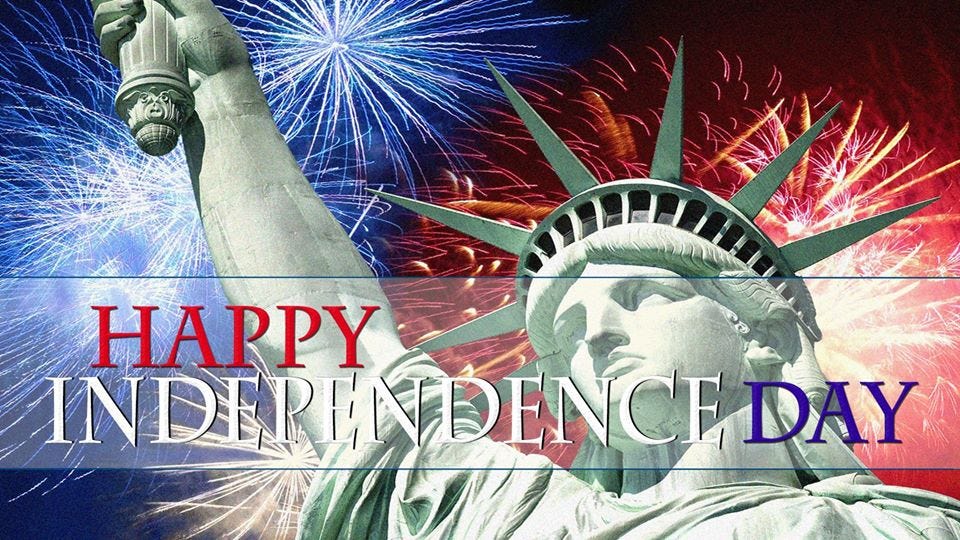
Happy Independence Day! https://substack.com/@poetpastor/note/p-167338050?r=5gejob&utm_medium=ios&utm_source=notes-share-action